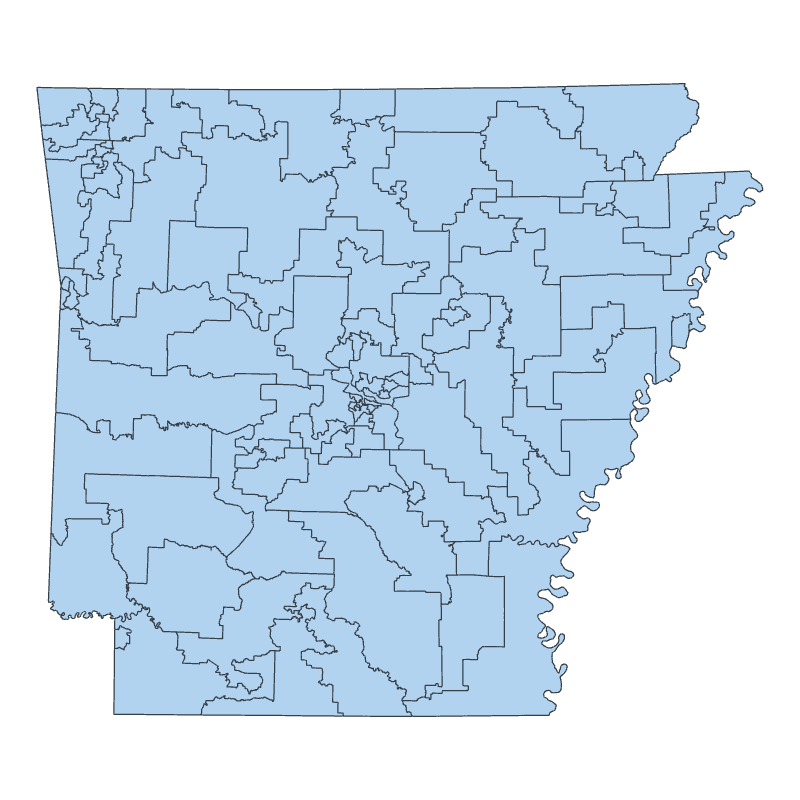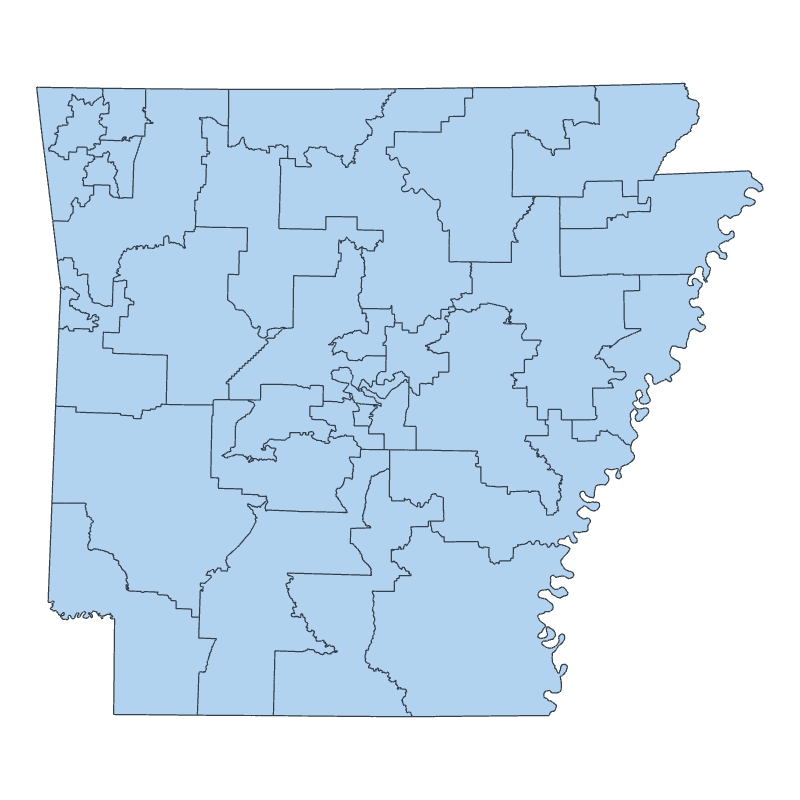Find Out Which Districts You Live in
Type your information in at the Arkansas Secretary of State’s
VoterView.org
to figure out which districts you get to vote in.
Voter View gives you info on all the categories listed below.
Districts, zones, and definitions
Voting Precinct
Each county’s election commission uses voting precincts to organize voters and polling locations for an efficient election process.
Your precinct is determined by where you live and your polling site will be assigned based on that. There is one polling
Most local newspapers publish a list of polling sites within a few days of an election. If you received a Voter ID card from your county clerk, it may show your precinct. You can also find your location online at voterview.org.
Ward
If you worried about something in your city, contact the elected official for your ward. Wards are chunks of space, or districts, that cities are divided into. Voters in a ward elect their own director (if the city has a board of directors like Little Rock) or alderman (if the city has a council like North Little Rock).
Voters might also be able to vote for one or more “at-large” directors or aldermen who represent more than one ward.
Ward representatives will plan things like the city’s water usage, new community centers, law enforcement priorities, and other needs.
Township
Arkansas counties are divided into townships, which were once used to elect justices of the peace. However, most of these elected offices now have designated districts, and so Arkansas townships have little function these days.
School District
Arkansas public schools are organized by district. Your school district determines which public school your child is assigned to. Large school districts are divided up even more, by zones.
A school board generally meets monthly to discuss and votes on a wide range of issues that affect local schools.
Many school board’s decisions have to do with money. These include deciding on repairs to aging school buildings, school closures, and where new schools are built. School boards make decisions about budget cuts or whether to ask voters to increase property taxes. Property taxes are the main source of support for public schools.
Municipality
A municipality is just a word for a “city” or “town” which is incorporated to provide local government services to a specifically defined area. Services typically include police, fire, streets, sanitation, water, wastewater, and parks and recreation. There are some 500 municipalities in Arkansas.
Justice of the Peace District
A justice of the peace is a county official who serves on a county quorum court. (Other states would call this person a county commissioner, and would call the agency the county commission.)
Your quorum court decides how your local tax dollars are spent on public services in your county, such as 911, fire fighting, law enforcement, road maintenance, courthouses, elections, and other services. Each county is divided into districts, and voters living in a district elect a justice of the peace to represent them on the quorum court.
“Justice of the peace” is an old-fashioned term that simply means an official who votes on issues to do with county government. And yes, a justice of the peace in Arkansas can perform marriage ceremonies.
The head of the court is called the county judge; the county judge does not vote but has the power to veto a decision by the court members. The number of members of a court is based on a county’s population. Counties with small populations have just nine justices of the peace. Those with larger populations have more; Pulaski County has fifteen. Terms last two years.
Judicial District Subdivision
Judicial District
Circuit Courts
Circuit court judges hear criminal and civil cases on all types of state law, like divorce, probate, criminal, and juvenile law. Circuit court trials might be either jury trials (where fellow citizens are chosen to hear the trial) or they might be bench trials (trials with no jury, and a judge decides the case).
District Courts
District courts hear less serious civil and criminal matters, like traffic violations, misdemeanors, and civil cases involving less than $25,000.
Court of Appeals District
This court hears appeals from circuit courts. A panel of judges reads briefs (detailed descriptions of the case) submitted by lawyers for both sides. They might also hear oral arguments. There is no jury. It is usually the court of last resort for the types of cases it hears, although some of its decisions may be later reviewed by the Arkansas Supreme Court.
The twelve judges on this court are elected from seven court of appeals districts in Arkansas. Most districts elect two judges, but two districts elect only one. The elected judges serve staggered eight-year terms.
State House of Representatives District
The Arkansas House of Representatives has 100 members elected from 100 districts, which are apportioned on a one-person, one-vote basis. Each House district has an average population of 29,159, according to the 2010 Census. Reapportionment is taking place in the fall of 2021, based on the 2020 Census. State Representatives convene as part of the General Assembly at the state Capitol in Little Rock.
State Senate District
The Arkansas State Senate consists of 35 members that represent 35 districts. Arkansas Senators convene as part of the General Assembly at the state Capitol in Little Rock and, with the House of Representatives members, make laws that govern Arkansas.
Arkansas State Senators are elected to represent the citizens within their district. Each district held an average of 83,312 residents, as of the 2010 Census. Reapportionment is taking place in the fall of 2021, based on the 2020 Census.
Congressional District
Arkansas has four U.S. Congressional districts, therefore, we have four members of the U.S. House of Representatives in Washington, D.C. They serve as members of Congress, which makes laws that govern the entire United States.
Representatives are elected to specifically represent these areas of their state. Each Congressional district is to be as equal in population to all other congressional districts in a state as practicable.
(Every state has two U.S. Senators, and they are elected by a state’s entire population of voters.)




